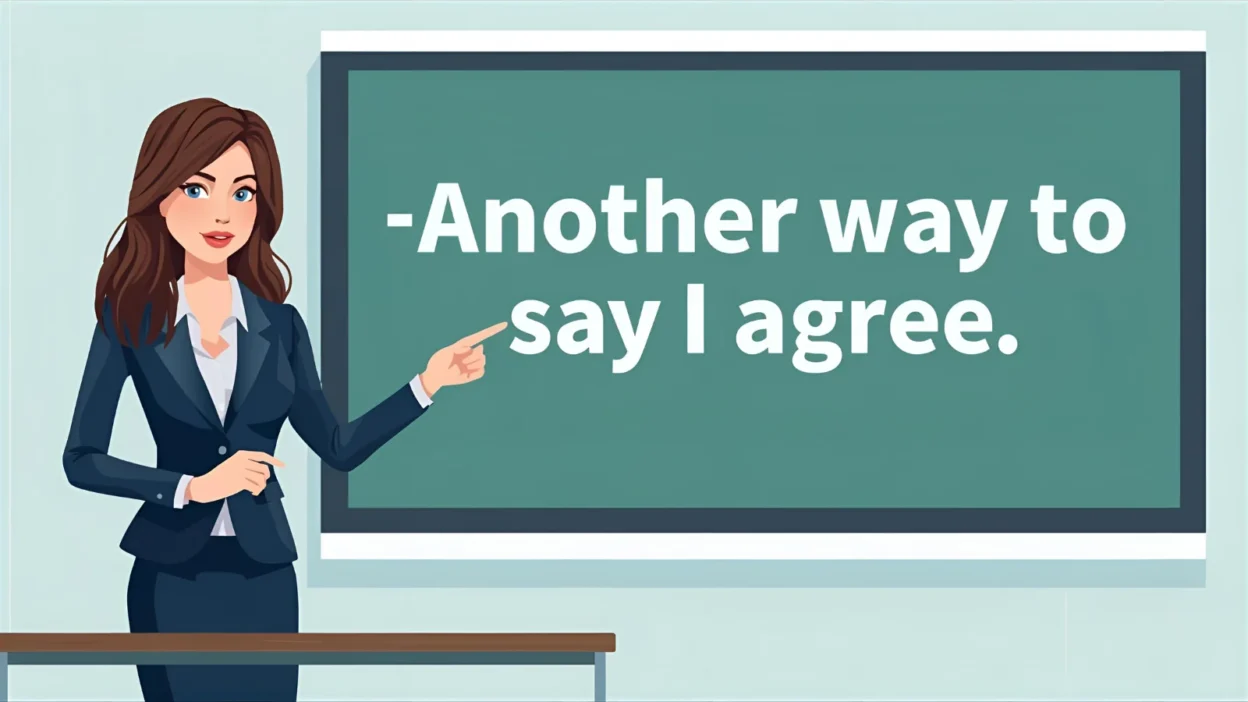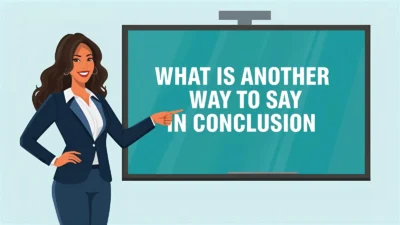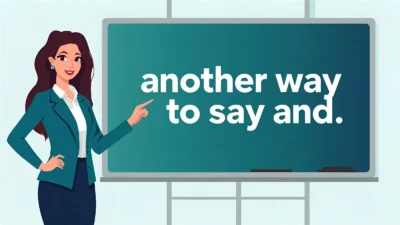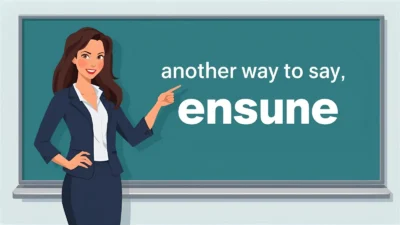The phrase “I agree” is one of the most frequently used expressions in daily communication—whether you’re collaborating on a project, discussing ideas, or participating in a debate. While clear and effective, overusing it can make your language sound repetitive or lack nuance.
By learning alternative expressions, you can show different degrees of agreement—strong support, mild alignment, or shared understanding—while matching the tone and formality of your situation.
In this article, you’ll discover 38 polished and natural alternatives to “I agree,” each with a clear meaning, detailed explanation, example, ideal context, and tone guide.
1. I Completely Agree
Meaning: You fully share the same opinion.
Detailed Explanation: This phrase strongly emphasizes full alignment with someone’s idea or viewpoint. It’s perfect for showing strong consensus in both professional and casual conversations.
Scenario Example: I completely agree with your approach to resolving this issue.
Best Use: Meetings, collaborations, written communication.
Tone: Strong, affirmative, confident.
2. Absolutely
Meaning: A concise, enthusiastic expression of total agreement.
Detailed Explanation: “Absolutely” works well in spoken communication to convey energy and conviction. It’s short but powerful.
Scenario Example: Absolutely, that’s the right strategy.
Best Use: Informal discussions, quick confirmations.
Tone: Energetic, positive, natural.
3. I Couldn’t Agree More
Meaning: Expresses the highest possible level of agreement.
Detailed Explanation: A strong, idiomatic phrase often used to show complete alignment and support for someone’s statement.
Scenario Example: I couldn’t agree more with your analysis of the data.
Best Use: Professional discussions, meetings.
Tone: Emphatic, supportive, warm.
4. You’re Absolutely Right
Meaning: Affirms that the other person’s point is entirely correct.
Detailed Explanation: This phrase directly credits the other person’s perspective and adds respect and acknowledgment.
Scenario Example: You’re absolutely right about the timeline issue.
Best Use: Professional emails, formal dialogue.
Tone: Respectful, direct, polite.
5. I’m With You on That
Meaning: Informally expresses shared perspective or understanding.
Detailed Explanation: A friendly, conversational way to show alignment, especially in teamwork.
Scenario Example: I’m with you on that—it’s the best solution.
Best Use: Team conversations, informal discussions.
Tone: Casual, friendly, cooperative.
6. That Makes Sense
Meaning: Acknowledges logical or reasonable agreement.
Detailed Explanation: Often used to validate reasoning or conclusions rather than personal opinions.
Scenario Example: That makes sense given the current situation.
Best Use: Business discussions, problem-solving.
Tone: Neutral, thoughtful, professional.
7. I See What You Mean
Meaning: Expresses understanding and partial agreement.
Detailed Explanation: Suggests open-mindedness and empathy, even if you’re not fully convinced.
Scenario Example: I see what you mean about the design changes.
Best Use: Conversations, collaborative settings.
Tone: Polite, considerate, moderate.
8. I Feel the Same Way
Meaning: Expresses emotional or personal agreement.
Detailed Explanation: Useful when you want to connect on a personal level and affirm shared feelings or attitudes.
Scenario Example: I feel the same way about building stronger relationships with clients.
Best Use: Empathetic communication, personal discussions.
Tone: Warm, sincere, friendly.
9. Exactly
Meaning: Sharp, concise confirmation of total agreement.
Detailed Explanation: Common in spoken English to quickly emphasize alignment with someone’s statement.
Scenario Example: Exactly! That’s what I was thinking too.
Best Use: Conversations, meetings, brainstorming.
Tone: Confident, casual, enthusiastic.
10. I’m On Board
Meaning: Confirms participation and support for an idea or plan.
Detailed Explanation: A popular workplace phrase signaling commitment as well as agreement.
Scenario Example: I’m on board with the new marketing approach.
Best Use: Business communication, teamwork.
Tone: Cooperative, professional, proactive.
11. I Think You’re Right
Meaning: Shows polite or moderate agreement.
Detailed Explanation: A softer alternative to “You’re right,” adding humility and balance.
Scenario Example: I think you’re right that we need more data.
Best Use: Discussions, professional dialogue.
Tone: Respectful, gentle, thoughtful.
12. We’re On the Same Page
Meaning: Both parties have shared understanding or agreement.
Detailed Explanation: Often used to confirm that everyone has the same perspective before moving forward.
Scenario Example: I’m glad we’re on the same page about the project goals.
Best Use: Meetings, group projects, planning.
Tone: Collaborative, friendly, reassuring.
13. That’s True
Meaning: Simple acknowledgment of accuracy or validity.
Detailed Explanation: Neutral and flexible, works in both formal and informal contexts.
Scenario Example: That’s true—the results speak for themselves.
Best Use: Everyday speech, analysis.
Tone: Neutral, polite, moderate.
14. I Concur
Meaning: A formal way to say “I agree.”
Detailed Explanation: Common in academic, legal, or professional contexts where formal tone is preferred.
Scenario Example: I concur with your conclusion regarding the report.
Best Use: Academic writing, business reports, formal meetings.
Tone: Formal, intellectual, polished.
15. I Support That
Meaning: Expresses alignment and endorsement of a plan or decision.
Detailed Explanation: Stronger than “I agree,” as it implies willingness to back the idea with action.
Scenario Example: I support that recommendation fully.
Best Use: Professional communication, decisions, approvals.
Tone: Professional, assertive, positive.
16. That’s a Great Point
Meaning: Acknowledges and supports the validity of someone’s argument.
Detailed Explanation: Ideal for discussions where encouragement or affirmation is needed.
Scenario Example: That’s a great point—I hadn’t thought of it that way.
Best Use: Group discussions, meetings.
Tone: Positive, respectful, encouraging.
17. Agreed
Meaning: A concise and direct way to show agreement.
Detailed Explanation: Common in professional or written communication for efficiency.
Scenario Example: Agreed. Let’s proceed with that timeline.
Best Use: Emails, team chats, discussions.
Tone: Neutral, clear, professional.
18. I’m In Favor Of That
Meaning: Indicates official or considered approval.
Detailed Explanation: Often used in formal decision-making or group votes.
Scenario Example: I’m in favor of that proposal for next quarter.
Best Use: Business or academic settings.
Tone: Formal, deliberate, supportive.
19. That’s Exactly Right
Meaning: Emphasizes precision and full alignment.
Detailed Explanation: Adds clarity and authority to agreement, often used after a well-supported argument.
Scenario Example: That’s exactly right—the research confirms it.
Best Use: Analytical discussions, presentations.
Tone: Strong, confident, professional.
20. You Nailed It
Meaning: Informally praises someone for being completely correct.
Detailed Explanation: Great for casual or team environments to show enthusiastic support.
Scenario Example: You nailed it with that design idea!
Best Use: Team chats, friendly settings.
Tone: Energetic, informal, encouraging.
21. That’s Correct
Meaning: Confirms factual or logical agreement.
Detailed Explanation: Common in technical or academic environments when confirming accuracy.
Scenario Example: That’s correct—the system updates automatically.
Best Use: Professional or technical communication.
Tone: Neutral, precise, factual.
22. Indeed
Meaning: A polished, formal affirmation of agreement.
Detailed Explanation: Works well in writing or formal speech to emphasize alignment.
Scenario Example: Indeed, that aligns with our findings.
Best Use: Academic writing, formal discussions.
Tone: Elegant, formal, intellectual.
23. I’m Of the Same Opinion
Meaning: Expresses full intellectual alignment.
Detailed Explanation: Common in scholarly or formal contexts; it communicates mutual understanding.
Scenario Example: I’m of the same opinion regarding the results.
Best Use: Academic papers, formal discussions.
Tone: Formal, respectful, clear.
24. You’re Spot On
Meaning: Informal expression of precise correctness.
Detailed Explanation: Often used to compliment insight or accuracy in conversation.
Scenario Example: You’re spot on about the timing issues.
Best Use: Work conversations, brainstorming.
Tone: Friendly, confident, casual.
25. I’m In Total Agreement
Meaning: Shows full and complete agreement with no reservations.
Detailed Explanation: A slightly formal way to express total alignment in professional discussions.
Scenario Example: I’m in total agreement with the new plan.
Best Use: Business meetings, written proposals.
Tone: Formal, assertive, confident.
Conclusion
While “I agree” is perfectly acceptable, having a range of expressions helps you adapt to context, tone, and intent. Whether you’re writing an academic paper (“I concur”), speaking in a meeting (“I’m on board”), or chatting casually (“Exactly!”), the right phrase communicates both your professionalism and your personality.
Mixing up your language makes your agreement sound more thoughtful, authentic, and engaging—and shows that you’re actively engaged in the conversation.



